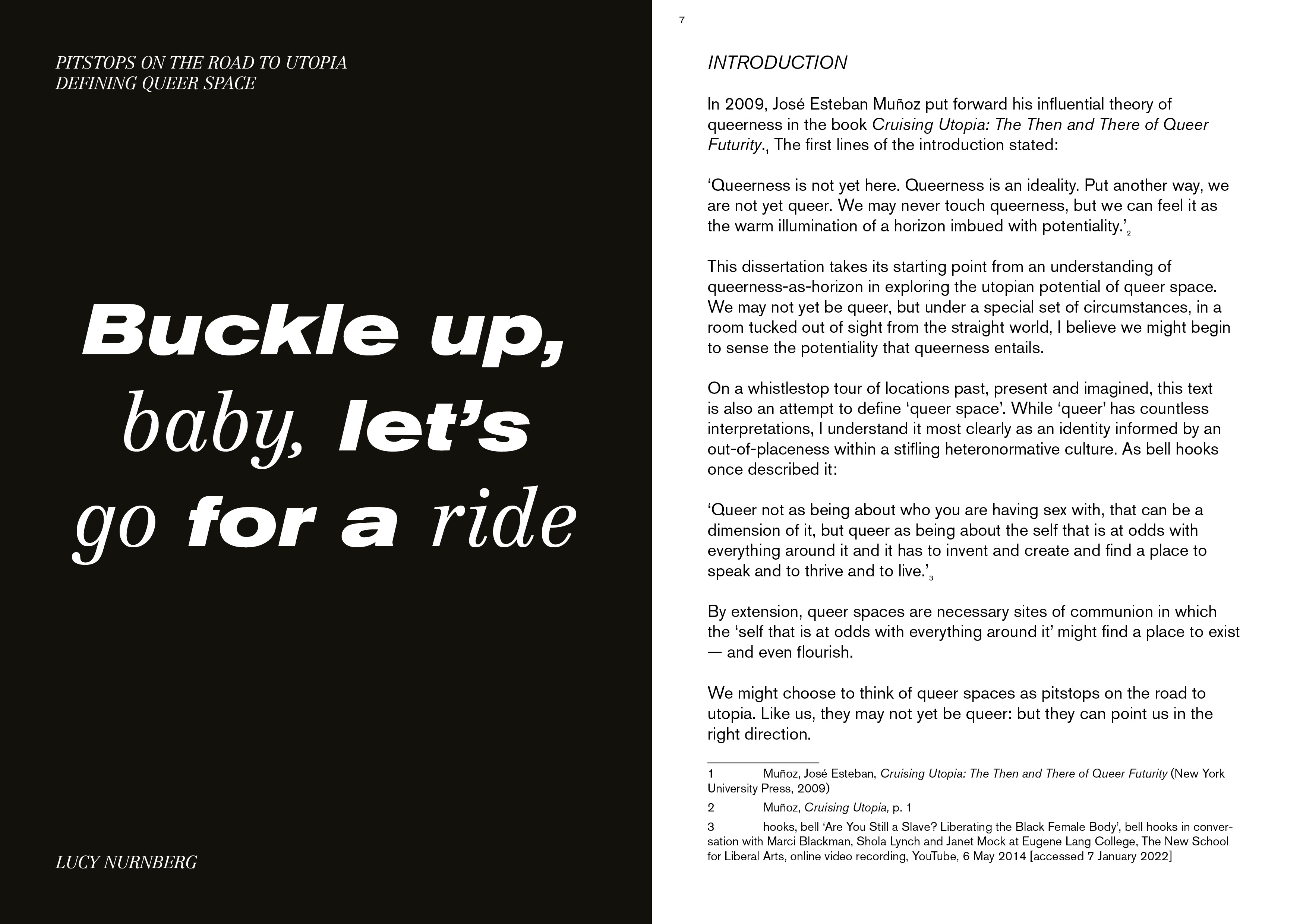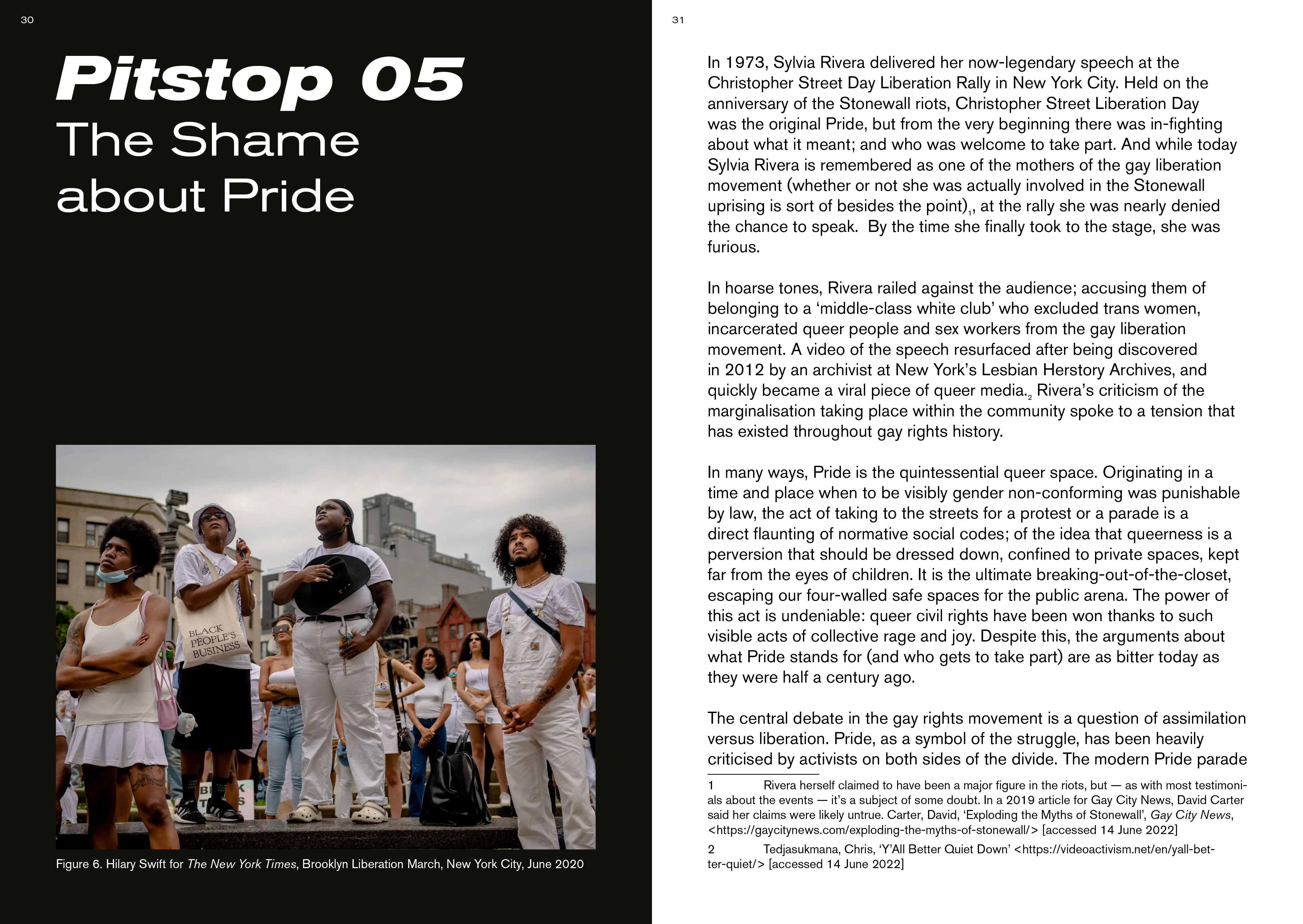Pitstops on the Road to Utopia: Defining Queer Space
Dissertation, Royal College of Art, 2022
From the closet to the Stonewall Inn, bathrooms to ballroom, physical space is central to our thinking about queerness and its history. Despite this, there is little analysis of what makes a queer architecture in terms of aesthetics or form. And while the term ‘queer space’ is generally used to refer to any location that serves a queer population, whether by design (such as gay bars) or appropriation (cruising destinations), many of these sites are fraught with discriminatory and normative politics of their own.
This dissertation proposes a new understanding of queer space that takes its starting point from José Esteban Muñoz’s theory of queerness as a utopian prospect: ‘Queerness is essentially about the rejection of a here and now and an insistence on potentiality or concrete possibility for another world.’ We can think of queer space, too, as a destination somewhere out ahead on the horizon — beyond the limits of our imagination within a normative built environment. On the road to a queerer future, each chapter is a ‘pitstop’ that looks at how a specific space (past, present and imagined) has allowed queer identities to come alive.
This dissertation proposes a new understanding of queer space that takes its starting point from José Esteban Muñoz’s theory of queerness as a utopian prospect: ‘Queerness is essentially about the rejection of a here and now and an insistence on potentiality or concrete possibility for another world.’ We can think of queer space, too, as a destination somewhere out ahead on the horizon — beyond the limits of our imagination within a normative built environment. On the road to a queerer future, each chapter is a ‘pitstop’ that looks at how a specific space (past, present and imagined) has allowed queer identities to come alive.



